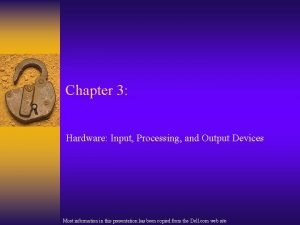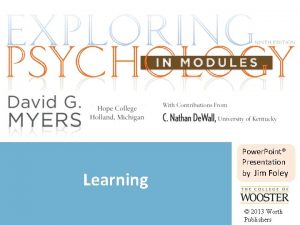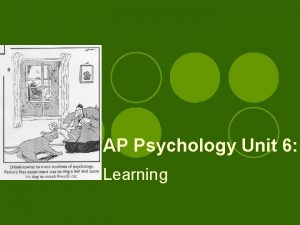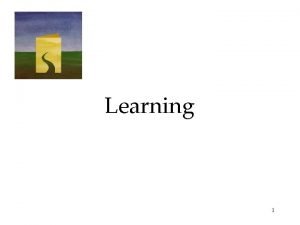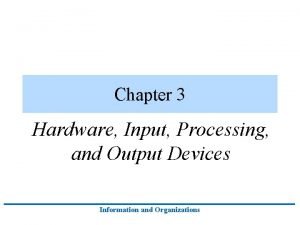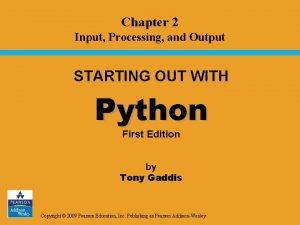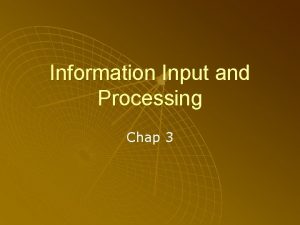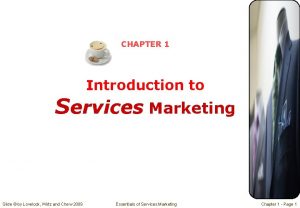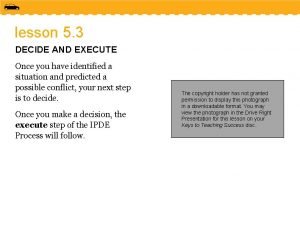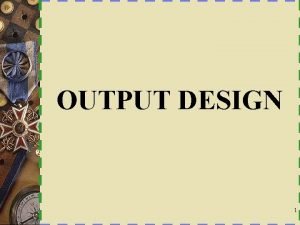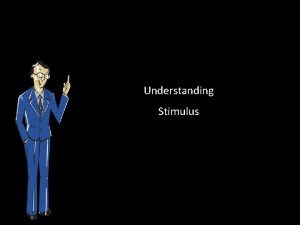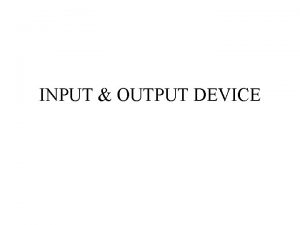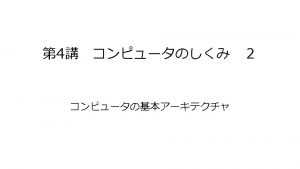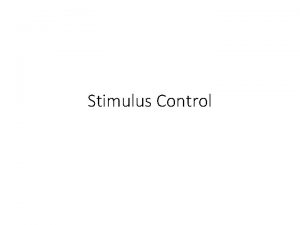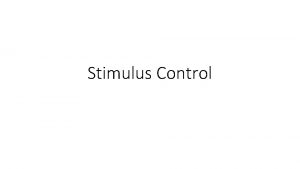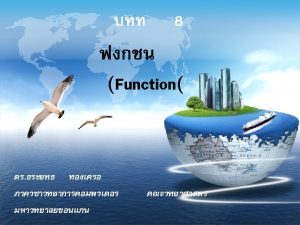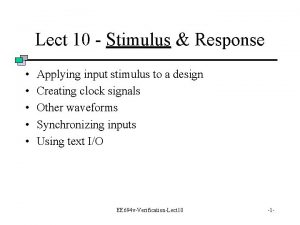INFORMATION PROCESSING Input Decide Output Identify stimulus Decide










- Slides: 10

INFORMATION PROCESSING Input – Decide – Output – Identify stimulus Decide what movement to do Single channel hypothesis 3 main senses; • EYES/ VISION/ VISUAL SENSE • EARS/ HEAR/ AUDITORY SENSE • PROPRIOCEPTORS/ FEELING/ KINAESTHETIC DISPLAY 1

SENSORY INFORMATION THERE ARE 2 TYPES OF SENSORY INFORMATION. . Internal External • Proprioceptive • Touch • Equilibrium- balance • Kinesthesis- body awareness from muscle, tendon and joint receptors. • Hearing and vision • For location of objects • Vision detects movement 2

PERCEPTION • Ø Ø Ø Making sense of what is happening in order to perform the different skills. Detection is the process of the registering of the stimulus, by the sense organ. Comparison is the process of referring the stimulus to the memory, to compare to previously stored stimuli. Recognition is the process of finding corresponding stimuli in the memory. R C D 3

SELECTIVE ATTENTION Sometimes we have to much information to take in. This is caused by information overload. http: //www. youtube. com/watch? v=Zz 5 y. Ki. HHbs 4 4

SINGLE CHANNEL HYPOTHESIS System becomes overloaded Becomes more efficient if tasks can be dealt with free from other matters Too much information - Decision making is slow Until one stimulus had a decision made about it, another cannot be acted upon. As skill levels increase, outside interference to the decisionmaking is ignored. IRRELEVANT INFORMATION. . . . WHAT ARE IRRELEVANT INFORMATION IN SPORT?

IMPROVING SELECTIVE ATTENTION Step 1: Write down ONE way of improving selective attention. Step 2: Screw your piece of paper up and throw it to someone. Step 3: Open your new piece of paper and add a different way of improving selective attention. . Step 4: Repeat until there are 4 different pieces of irrelevant information on your sheet of paper.

IMPROVING SELECTIVE ATTENTION • • • Changing the intensity of the stimulus. Highlight/ focus on appropriate cues. Scenarios task. Mental rehearsal. Learn to ignore irrelevant stimulus. Motivate and arouse the performer. 7

EXPANDED MODEL OF IP Input – stimuli received by sense organs Decide Selective attention Output – (perception) 8

EXAM QUESTION To be effective, games players will need to use selective attention. (a) Explain the term selective attention and give examples of its use from a team game. (4 marks) (b) How can a coach improve a player’s selective attention? (4 marks) (c) State three of the major senses used in volleyball. (3 marks) ANSWER (a) Too much information/stimuli from environment; Limited processing capacity/single channel hypothesis; Filtering/ignoring/blocking out of unnecessary information; E. g crowd/environment/appropriate example; Focussing/concentrate/picking out on relevant information/stimulus; E. g Player position, ball shuttlecock/equiv. ; 9

ANSWER (b) Changing the intensity of the stimulus/examples; Motivate and arouse the performer/ performer is alert; Transfer from previous experience to help with explanation/ expectation; Direct attention to one aspect of the performance/ highlight/cue; Identification/focus on cues/specific cues/; Learn to ignore irrelevant stimulus/what is relevant/training with distraction/audience; Lots of relevant practise/rehearsal/mental rehearsal (to the stimulus); ANSWER (c) Sight/visual sense; Hearing/auditory sense; Touch/tactile sense; Propriceptive/ kinesthetic sense/touch; 10
 Input process output storage
Input process output storage Generalization classical conditioning
Generalization classical conditioning Habituation ap psychology
Habituation ap psychology Relatively permanent change meaning
Relatively permanent change meaning Input processing output
Input processing output Hardware input processing and output devices
Hardware input processing and output devices Chapter 2 input processing and output
Chapter 2 input processing and output Processing information input
Processing information input Mental stimulus processing service
Mental stimulus processing service Lane positions
Lane positions Output design example
Output design example
